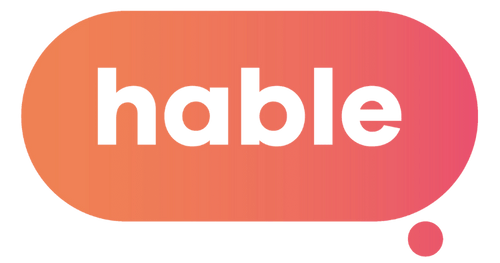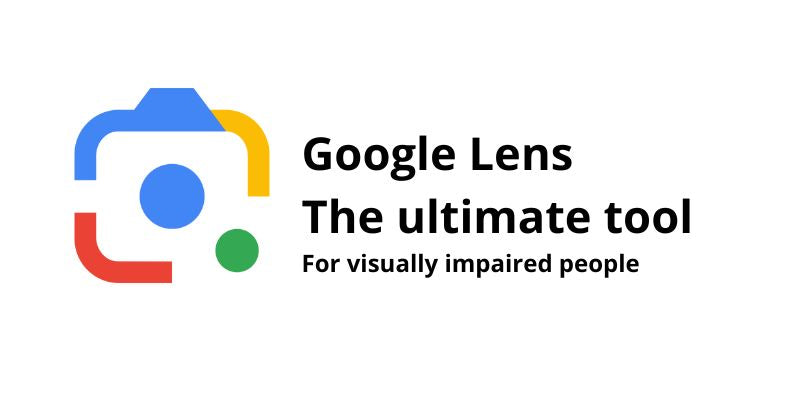Google Lens is a free, AI-powered app designed to enhance how you interact with the world through your smartphone’s camera.
Using cutting-edge visual recognition technology, it can read and interpret text, identify objects, and even provide relevant information about what you see. This makes it an essential tool, particularly for blind and visually impaired individuals who benefit from the app's text recognition and translation features.
What sets Google Lens apart from competitors like Seeing AI and Envision AI? While all these apps help users navigate the world by recognizing objects and text, Google Lens offers some distinct advantages.
For instance, it's integrated with Google's search engine and tools, enabling users to access a vast database of information with ease. Whether it’s completing homework, translating a foreign menu, or extracting key details from a document, Google Lens makes these tasks quicker and more intuitive.
Ready to explore how this app can improve your life? Let’s dive into its remarkable features and how to make the most of them.
Getting Started: Downloading and Using Google Lens
How to Download and Set Up Google Lens
If you’re ready to experience Google Lens, the first step is downloading the app. On Android, it’s a standalone app that can be downloaded directly from the Google Play Store. For iOS and iPadOS users, Google Lens is part of the Google app, which is available in the App Store.
Once you’ve installed the app, activating it is simple. On the app’s home screen, locate and press the “Search with Camera” button. This will launch the camera function, allowing you to point your phone at any object or text and use Google Lens’ various features.
Using Filters for Specific Tasks
Before taking a picture, you can apply filters to narrow down your results. These filters are especially helpful if you’re using the app for a specific purpose, like solving math problems or translating text.
You’ll find the filter options at the bottom of the screen, and they can be easily adjusted by swiping up or down on the slider. By default, the filter is set to "Visual Search," but it can be switched to other modes as needed.
Once you’re ready, press the "Camera Search" button to capture the image. While the app processes the picture, it will present several action options, such as reading the text aloud, copying information, or translating it into another language.
Unlike apps such as Seeing AI, Google Lens doesn’t guide you through framing the photo, so capturing a good image may take practice.
Accessibility of Google Lens
For blind and visually impaired users, Google Lens offers varying degrees of accessibility, depending on the device. On Android, it integrates well with TalkBack, a screen reader that reads aloud the options available on the screen, making it easier for visually impaired users to navigate the app.
On iPhone, the experience is generally good but not perfect. At times, the app may fail to read certain buttons or elements out loud when using VoiceOver.

Fortunately, you can manually label unspoken elements. To do this, tap the screen with two fingers twice and hold until a text field appears.
You can then enter a label for the button or element that wasn’t read aloud, making it easier to navigate in the future. After labeling, press "Save" to complete the process.
Challenges in Using Google Lens
One of the challenges visually impaired users may face is that Google Lens doesn’t offer guidance when taking a picture. Unlike Seeing AI and Envision AI, which provide feedback on how to adjust your phone’s position, Google Lens leaves it up to the user to frame the shot correctly.
This can be particularly challenging for fully blind individuals. Good lighting is crucial for accurate results, and you can use the flash option in the app to improve image clarity.
With practice and proper lighting, users can learn to capture clear images and make full use of Google Lens’ powerful features.
All Features Explained and How to Use Them
Search Mode: The Default Function
When you open Google Lens, it automatically starts in Search Mode, its default function. This mode is versatile—it analyzes the image you’ve captured and suggests the most appropriate action.
For example, if you take a photo of text, the app will present options to read the text aloud, translate it, or copy it for later use. If you take a picture of a barcode or QR code, it will provide information such as product details and prices, or direct you to a website.
For object recognition, Google Lens searches for similar images and supplies relevant information about the item, including potential purchase options or historical context.
Translate Mode: Breaking Language Barriers
Translate Mode is one of the most popular features of Google Lens, particularly for travelers and students. This mode allows you to translate text from virtually any language, directly from an image.
Whether you’re translating a document, a restaurant menu, or text from a saved image, Google Lens can instantly display the translated version.
To use this feature, simply point your camera at the text you want to translate and capture the image. Google Lens will process the text and present the translation in your selected language, overlaying the translated text on top of the original image.
You can even have the translated text read aloud using TalkBack or VoiceOver, making it especially helpful for visually impaired users.
Additionally, you can translate text from a saved image. To access this, click the button to the left of the camera search button and choose an image from your gallery.
All the same translation features will be available for saved images, including the option to copy or share the translated text.
Homework Helper: Solving Math Problems
Though Google Lens can’t do all of your homework for you, it does offer a unique Homework Helper feature that can assist with math problems. Simply take a picture of an equation, such as "10x + 5 = 285," and Google Lens will identify the formula and offer several options.
You can copy the equation to your clipboard, search for additional information, or even modify it using the in-app calculator.

When you select the "Change" button, Google Lens opens an advanced calculator that allows you to adjust variables and re-calculate.
You can also select the "Solve" option to get a step-by-step explanation of how the equation was solved, which is a great tool for learning.
However, this feature is not fully accessible through VoiceOver or TalkBack, and users may need assistance with this particular function.
Pros and Cons of Google Lens
Pros:
- Quick and Responsive: Google Lens processes images almost instantly, making it a fast and efficient tool.
- Free to Use: Unlike some similar apps, Google Lens is completely free, with no premium features hidden behind a paywall.
- Versatile: The app combines multiple useful features—text recognition, object identification, and translation—into one interface.
- Smart Functionality: Google Lens can intelligently determine the best action for each image, minimizing the effort required by the user.
Cons:
- No Guidance for Picture Taking: Google Lens doesn’t provide verbal feedback when framing a photo, making it more difficult to capture a perfect image, especially for blind users.
- Temporary Accessibility Issues: Since Google Lens is frequently updated, there may be periods when certain accessibility features don’t work as expected.
Differences Between Google Lens and Similar Apps
Google Lens is not the only app designed to assist blind and visually impaired users with text recognition and object identification. However, it offers some unique features not found in competitors like Seeing AI and Envision AI.

Seeing AI and Envision AI provide guided assistance for taking photos, giving users verbal instructions on how to adjust the camera for the best image. This makes them more user-friendly for blind individuals.
However, Google Lens excels in its versatility. In addition to object recognition, it allows users to translate text in real-time and copy it with a single tap. Google Lens also integrates seamlessly with Google Search, giving it access to a vast pool of information.
Another key difference is the ability to upload images from your gallery and apply the same features.
Both Seeing AI and Envision AI offer this feature, but Google Lens has more tools available to process the images, such as real-time translation, barcode scanning, and product identification.
Frequently Asked Questions (FAQ)
What is Google Lens?
Google Lens is an AI-powered app that recognizes objects, translates text, scans QR codes, and provides relevant information based on images captured with your camera.
How do I use Google Lens?
You can use Google Lens via the dedicated app on Android or through the Google app on iOS. Simply open the app, point your camera at the object or text, and let Google Lens identify it and offer appropriate actions like translation, text reading, or searching for more details.
Is Google Lens free?
Yes, Google Lens is completely free and accessible to anyone with a compatible Android or iOS device.
Can Google Lens work without an internet connection?
While some basic functionalities like text recognition might work offline, most of Google Lens' features, including translations and searches, require an internet connection to access Google’s databases and provide results.
Can Google Lens translate languages in real time?
Yes, Google Lens can instantly translate text from one language to another in real time. You can also take a picture of the text or upload an image from your gallery for translation.
Can Google Lens read text aloud for blind or visually impaired users?
Yes, Google Lens can read text aloud when used with TalkBack on Android or VoiceOver on iOS. However, the app may require some manual adjustments, such as labeling elements for full accessibility.
Does Google Lens support math problem-solving?
Yes, Google Lens can help solve math problems by analyzing equations and providing step-by-step solutions. It can also modify equations and calculate answers using its built-in calculator feature.
Can I scan barcodes and QR codes with Google Lens?
Yes, Google Lens can scan both barcodes and QR codes, offering information such as product details or links to websites depending on the code.
Can I use Google Lens with saved images?
Yes, you can use Google Lens with photos already saved in your gallery. This feature is particularly useful for translating text or identifying objects from images sent to you via email, WhatsApp, or other apps.
Does Google Lens support screen reader tools like TalkBack and VoiceOver?
Yes, Google Lens is compatible with screen readers like TalkBack and VoiceOver, though some users may encounter occasional accessibility challenges that can be resolved by manually labeling elements in the app.
Is Google Lens available on desktop or only on mobile devices?
While Google Lens is primarily designed for mobile devices, you can access similar features through Google Images on desktop browsers. Simply upload an image and use the "Search by Image" function to perform visual searches.
How accurate is Google Lens with object identification?
Google Lens is generally accurate with object identification, especially for common items, but its accuracy can vary based on the complexity of the object and the clarity of the image. The app works best with well-lit and clearly framed photos.
How often does Google Lens get updates?
Google Lens receives regular updates from Google to enhance its features and improve performance. However, during these updates, some features may become temporarily inaccessible for visually impaired users until the app stabilizes.




